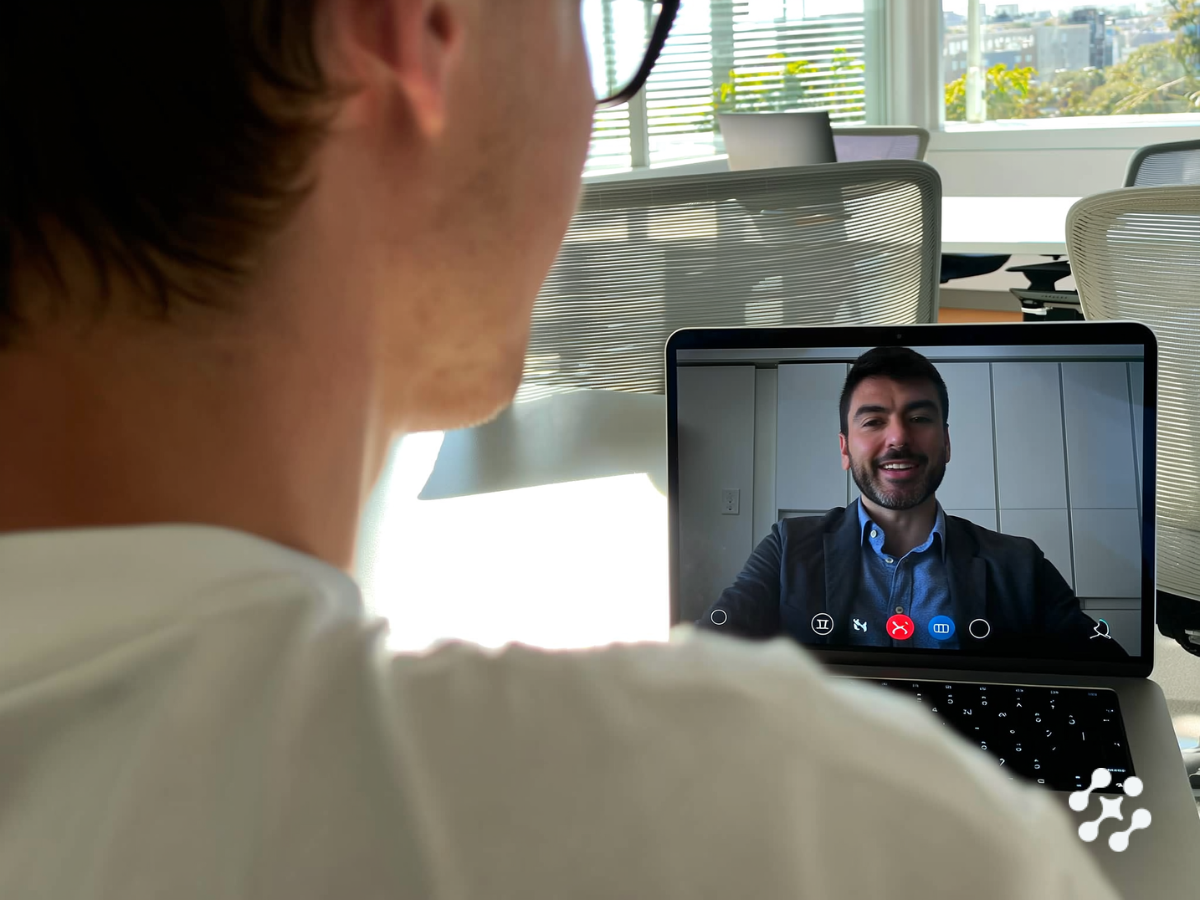
How to Calculate and 10x Sales Efficiency
minute read

Ben Hale
You’re not a babysitter. But your reps spend most of their week on admin.
Field data from Salesforce shows the average rep spends 28% of their time actually selling. Miss one quarter and Finance asks for head-count cuts; miss two and the board starts hunting for a new CRO. Expanding that 28% is great, but you also need your team to do more with it. Tracking sales efficiency provides valuable insights into your team's performance, helping you understand organizational health and identify areas for improvement.
We sat down with Konnor Andersen, the Vice President of WW Sales & Channels at Zluri to get his playbook for running a more efficient sales motion. For a software company, a company's sales efficiency is a crucial performance metric that directly impacts profitability and long-term growth.
Calculate Sales Efficiency
You can’t manage what doesn’t get measured. To measure sales efficiency, it’s essential to track the right sales efficiency metrics. This helps you evaluate how effectively your team converts investment into revenue, and when used with other metrics, it provides a comprehensive view of sales performance.
Ratios are usually the best way to benchmark sales efficiency. There are three metrics you can use to do an efficiency temperature check:
- Sales Efficiency Ratio = Net‑new ARR ÷ Sales Expense
- Revenue‑per‑Rep = Net‑new ARR ÷ # Reps
- Cycle Efficiency Ratio = Target Deal Cycle ÷ Actual Average Deal Cycle
To calculate these ratios, you’ll need a few inputs:
Measuring how much revenue is generated in the current quarter versus the previous quarter helps assess sales efficiency and identify trends in sales performance. This approach allows you to pinpoint areas for improvement and optimize your sales process using reliable sales metrics.
Sales Efficiency Metrics, Examples & Benchmarks
- Sales Efficiency Ratio: with net-new quarterly ARR of $3.5M and $4M in spend, you’d have a ratio of 87.5%. Typically, a healthy sales efficiency ratio is 80% or higher.
- Revenue-Per-Rep: with net-new ARR of $1 M and 6 reps, you’d have $167K in revenue per rep. Mileage may vary depending on your revenue targets, but you usually want at least $125K per rep. Tracking new customers acquired helps contextualize this metric and assess rep performance.
- Cycle Efficiency Ratio: a target sales cycle of 60 days, and an actual average cycle of 65 days, your cycle efficiency would be 92.3%. A healthy ratio tends to be 90% or higher.
Take 90-seconds to fill out the calculator below and get an efficiency scorecard. This will help you see where you stand on these sales efficiency metrics. The scorecard will also help you find the highest-leverage fixes.
Achieving a Good Sales Efficiency Ratio
A good sales efficiency ratio is the hallmark of a healthy, scalable business. To achieve this, you need to focus on both sides of the equation: increasing sales revenue and controlling sales and marketing expenses. Start by targeting high-value customers who are most likely to convert and deliver strong customer lifetime value. Optimize your pricing strategies and refine your sales messaging to resonate with your ideal audience, ensuring your team is always putting their best foot forward.
Investing in sales training and development is another key lever. Well-trained sales teams are more effective at identifying opportunities, overcoming objections, and closing deals. By tracking sales efficiency metrics like customer acquisition cost and customer lifetime value, you can pinpoint where your sales strategies are working, and where there’s room to boost sales efficiency. Regularly reviewing these metrics helps you make data-driven decisions, ensuring your sales and marketing spend is always aligned with your revenue goals. The result? Efficient sales operations that drive more revenue and set your team up for long-term success.
Lever 1: Automate Data Entry
Your reps are losing 72% of their week (or more!) to admin tasks like CRM data entry. The good news is that AI can help reduce—or even eliminate—this workload. Automating data entry not only improves efficiency and sales productivity, but also frees up valuable time for more meaningful customer interactions.
When to Automate Data Entry
If your sales efficiency ratio slips below 80%, data entry automation can probably help. To find the best bottlenecks to automate, talk to your team about the “time sucks” that hit them the hardest.
How to Automate Data Entry
- Pipe call-recording data straight into fields (e.g., Gong → Salesforce).
- Auto-create follow-up tasks from transcript keywords.
- Auto-draft the recap email the moment Zoom ends.
Data Entry Automation Example
Konnor told us that Zluri no longer has reps enter call notes manually. Instead, Gong call transcripts flow straight into Salesforce and generate next-step tasks automatically. Now, AEs can move on to the next prospect instead of spending time typing up notes. The change reclaimed chunks of selling time each day and made Zluri’s sales team leaner and meaner.
Lever 2: Focus the ICP
Better win rates raise your revenue without extra spend. Sales teams that tighten their Ideal Customer Profile report 68% higher win rates. A focused ICP helps your team convert prospects more efficiently, generate revenue faster, and get more closed won deals.
When to Focus ICP
Any low efficiency measure can mean you need to focus your ICP. An unfocused ICP can cause deal slippage, segments spreading reps thing, and long sales cycles. If you’re seeing any of those symptoms in your pipeline, this will be a good place to look.
How to Focus ICP
Run a “popcorning” ICP play:
- Lock one high confidence micro-segment. Narrow the window as much as possible. Think about…
- Industry
- Size
- Region
- Pursue this segment relentlessly. Win fast and stack social proof.
- If the ICP proves out, change only one variable (e.g., move slightly up-market). iterate, test, repeat.
ICP Focus Example
Early on, Zluri chased any company with a SaaS-sprawl headache, but Konnor noticed deals moved fastest when the champion sat inside security-minded IT teams. He recast all outbound around that micro-segment. He used the same messaging on a tighter list and watched conversations rise as a result.
Lever 3: Triage Funnel Leaks
80% of deals need more than 5 follow-ups, yet 44% of reps quit after just one. That makes the first-to-second meeting handoff the leakiest stage in most sales funnels. Improving lead response time can help reduce these funnel leaks and increase conversion rates by ensuring prospects are engaged promptly. These leaks show up in the efficiency data.
When to Triage Funnel Leaks
Watch for a cycle efficiency ratio dipping below 90%, or a single stage that hemorrhages half your opportunities. Reps might complain that they’re “waiting on prospects” while pipeline balloons to 4-5x quota. These signals tell you that you’ve got a leaky pipeline.
How to Triage Funnel Leaks
- Pull last-quarter conversion & days-in-stage data; visualize it with a bar chart, Sankey, or heat-map.
- Circle the worst leak (largest % drop or longest median days).
- Run a quick 5-Why with frontline reps to isolate root cause (qualification gap, slow follow-ups, missing multi-threading, etc.).
- Apply one surgical fix, like…
- Sequence nudges + 48-hr task SLA (Demo → 2nd Call).
- Mutual Action Plan template (Proposal → Close).
- “No-decision” exit path with nurture (SQL → Discovery).
- Sequence nudges + 48-hr task SLA (Demo → 2nd Call).
- Measure for one full cycle. If conversion lifts more than 10 pts or time-in-stage drops by more than 20%, lock the change and move to the next choke-point.
Funnel Leak Triage Example
By charting stage-by-stage conversion, Konnor spotted a big drop between the first demo and the second meeting. He introduced a 48-hour follow-up SLA plus a templated recap email; reps now book the next call before hanging up, and that once-leaky hand-off no longer stalls healthy deals. Sales efficiency has climbed as a result.
Lever 4: Split AE-Outbound from SDR-Outbound for Your Sales Team
When to Split AE and SDR Outbound
If your revenue-per-rep is flat but cycle efficiency is healthy, this could mean reps are busy but not landing whales. You might also notice that AE-sourced deals are bigger or close faster than SDR-sourced ones.
How to Split AE and SDR Outbound
- Create two opportunity sources. Tweak the sources in your CRM to include both “SDR-Outbound” and “AE-Outbound.”
- Track separately. Monitor volume, ACV, win-rate for each and review in your weekly pipeline call.
- Allocate resources. Let SDRs drive top-of-funnel volume and keep AEs focused on enterprise outbound.
- Coach by channel. Tailor sequences and talk-tracks for both channels. You can also share AE-outbound wins as templates for SDR teams.
AE/SDR Outbound Split Example
Zluri’s dashboard now breaks “outbound” into two sources because AE-sourced opps arrive larger and with warmer intent. SDRs stay laser-focused on volume at the top, while AEs work a short list of strategic accounts. This gives leadership clearer channel data and reps clearer priorities, making the sales motion more efficient.
Lever 5: Relieve Super Reps
When to Relieve Super Reps
If one of your reps carries more deals than the rest, or if they jump into every late-stage call, this could be an issue. A strong indicator would be revenue-per-rep and cycle efficiency lagging after promoting your top rep to lead.
How to Relieve Super Reps
- Set a personal-deal cap. For example, you could say any frontline manager can carry no more than five live opps.
- Shift to outcome measurements. Have managers review outcome-based metrics like AE-sourced opps, win-rate, cycle efficiency, then only dive into inputs when metrics go into the red.
- Install a deal-coach rhythm. In weekly 30-min sessions with each rep, managers can ask, “What’s blocking this deal and how can I help?” rather than stepping in and running it.
- Celebrate delegation wins. Share success stories about reps closing without manager intervention, reinforcing the new culture.
Super Rep Relief Example
After moving his top performer into management, Konnor capped that leader at a handful of personal deals and shifted the rest of their energy to coaching one-on-one. The ex-rep still jumps in for deal strategy, but no longer hogs the steering wheel. This frees each AE to own and close more pipeline, improving Zluri’s sales efficiency.
Frequently Asked Sales Efficiency Questions
10x Sales Efficiency with Chief
Chief can quietly watch your sales efficiency metrics night and day. If the sales efficiency ratio slips from a healthy 92% to a lackluster 83%, Chief pings you: “Heads up. Your sales efficiency dipped to 83% last week. Spend rose $50K while new ARR stayed flat.”
The message suggests a next step: share the insight with your team for coaching. Chief then tracks the impact of the actions you take. No spreadsheets or RevOps chops needed. Just a quick nudge, a clear “why,” and a guided action that tackles efficiency before it becomes a problem.
To see Chief in action, request a demo.
.svg)


.%20(3).webp)